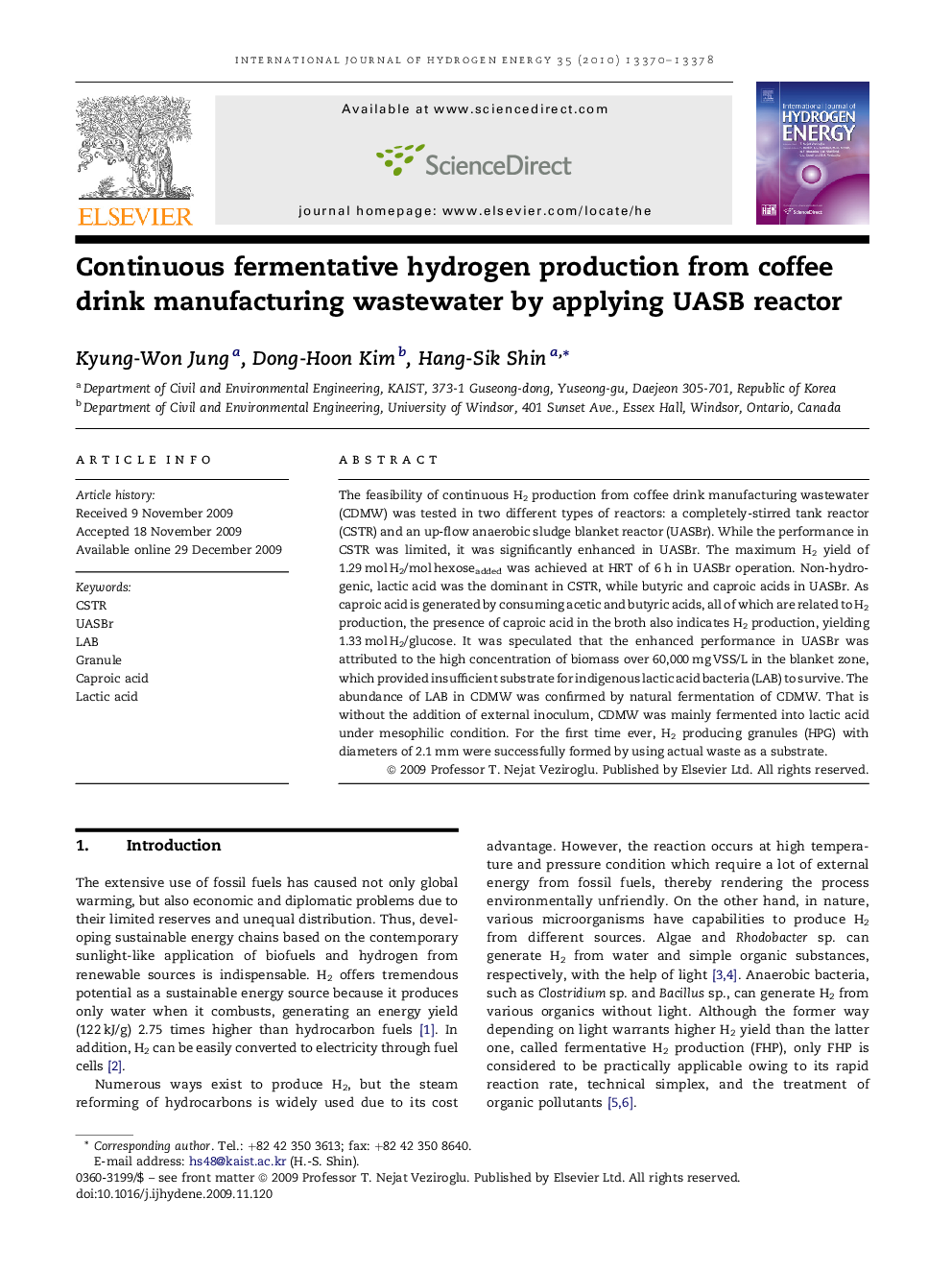| Article ID | Journal | Published Year | Pages | File Type |
|---|---|---|---|---|
| 1282701 | International Journal of Hydrogen Energy | 2010 | 9 Pages |
The feasibility of continuous H2 production from coffee drink manufacturing wastewater (CDMW) was tested in two different types of reactors: a completely-stirred tank reactor (CSTR) and an up-flow anaerobic sludge blanket reactor (UASBr). While the performance in CSTR was limited, it was significantly enhanced in UASBr. The maximum H2 yield of 1.29 mol H2/mol hexoseadded was achieved at HRT of 6 h in UASBr operation. Non-hydrogenic, lactic acid was the dominant in CSTR, while butyric and caproic acids in UASBr. As caproic acid is generated by consuming acetic and butyric acids, all of which are related to H2 production, the presence of caproic acid in the broth also indicates H2 production, yielding 1.33 mol H2/glucose. It was speculated that the enhanced performance in UASBr was attributed to the high concentration of biomass over 60,000 mg VSS/L in the blanket zone, which provided insufficient substrate for indigenous lactic acid bacteria (LAB) to survive. The abundance of LAB in CDMW was confirmed by natural fermentation of CDMW. That is without the addition of external inoculum, CDMW was mainly fermented into lactic acid under mesophilic condition. For the first time ever, H2 producing granules (HPG) with diameters of 2.1 mm were successfully formed by using actual waste as a substrate.
